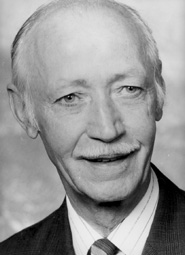Lew had been a graduate of Leeds University, then accepting a brief period with the Fleet Air Arm, before returning to formal education at Imperial College. Saunders Roe then offered an apprenticeship, and a Marshall Scholarship later lured him to Cornell University. The doctorate he gained there led him into a life based on research at the Royal Aircraft Establishment (as it was then), having done summer work there as an undergraduate.
Hypersonics was one of the post-Second World War enthusiasms in aeronautics that offered opportunities that were as badly understood as the title. Lew was given a leadership role to assist with clarifying both, but by the mid-’60s he was asked to change the regime of his work enormously by taking on ‘low-speed wind tunnels’ as problems arose with aircraft developments in more practical speed ranges. With a quarter of a century’s experience in fluid mechanics, and having been fortunate enough to brush shoulders with some exceptional staff from the Continent who opted for UK service after the war, he was well placed to handle noise, a specialty that grew out of propulsion and thermodynamics. There followed opportunities to advise on the peculiarities of Concorde’s sonic booms, after serving the military branches of industry when lesser noise problems were companions to inevitable advances in flight speeds.
Despite fierce competition, Lew was given the Sir George White Chair of Aerospace Engineering at the University in 1973, which is not to suggest that the academic world was then a novelty to him. He had not only served as monitor to many university research contracts while at the Royal Aircraft Establishment, but had also lectured in colleges nearby. In spite of the lofty specialities which had defined his ‘industrial’ life, Lew endeared himself to staff and students by taking on the introductory Fluid Mechanics programme, and even chose to lead the newcomers through their laboratory exercises; indeed, he did a thorough job of every exercise beforehand to familiarise himself with the challenges.
One of the strengths staff recognised in their new Head was his widespread contacts throughout the aeronautical world; whatever the need for an adviser, colleagues need only ask Lew for a recommendation. His gentle skills with people drew returns of quality. His direct contact with new students allowed him to learn names and ‘character’ quickly, bringing rewards in the future.
Even after his acceptance of the professorial post, Lew maintained a strong presence at the Royal Aeronautical Society with membership of senior committees and a Vice-Presidency in 1975. This was followed by the Presidency in 1978-79, which entailed much travelling as well as other demands on his academic timetable.
With a civil servant’s period of service in mind, retirement at 60 was no surprise, but the family’s retirement homes in Wales were to offer an alternative to any ‘bookish’ resting. They allowed Lew the freedom to do some hill-farming (pigs), and later to concentrate on a walled garden, bees and a concern for wildlife on a larger scale. He also retained a passion for rugby during his final nine years in Crickhowell. His son Richard was by this time in France, and his daughter Liz in Australia, but his wife Averil continued to be the loving companion and was always a source of support for Lew.
David Birdsall
